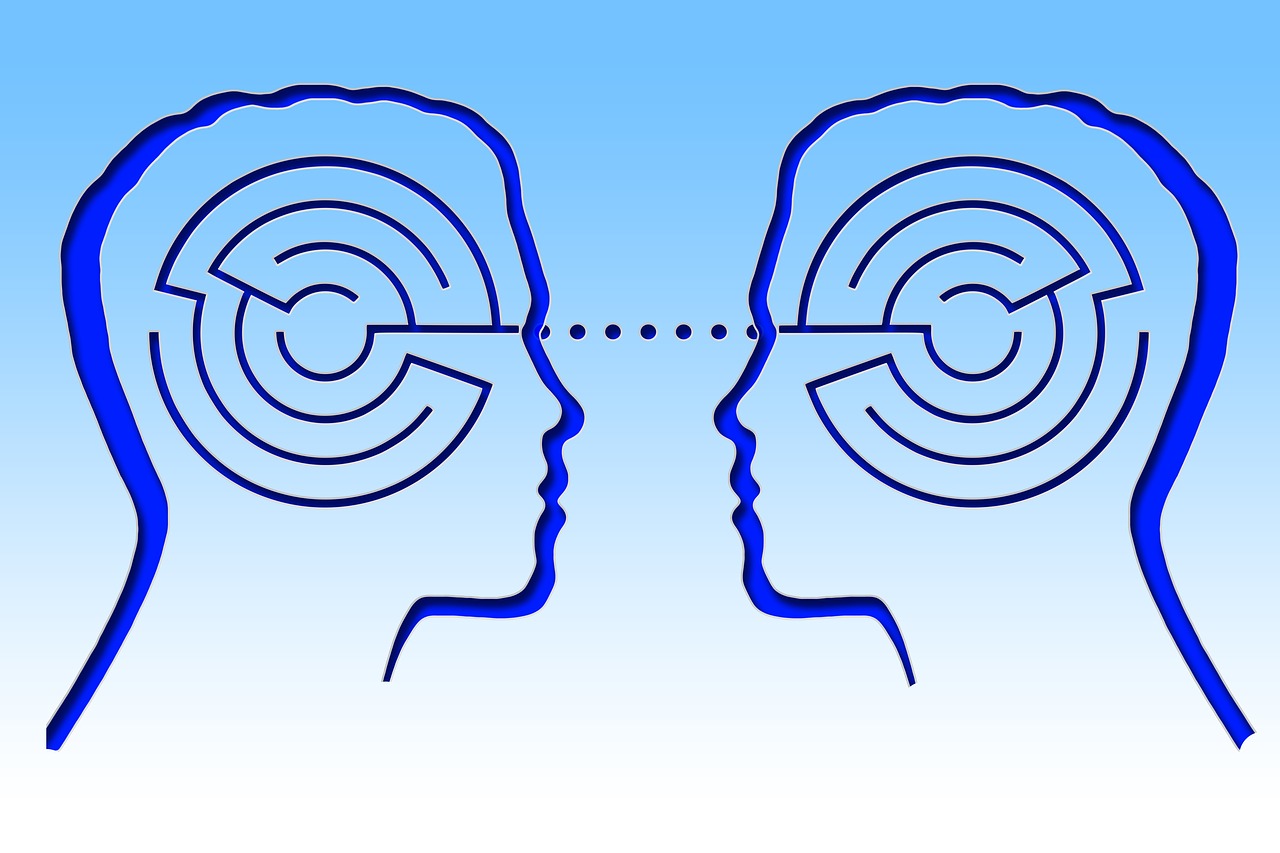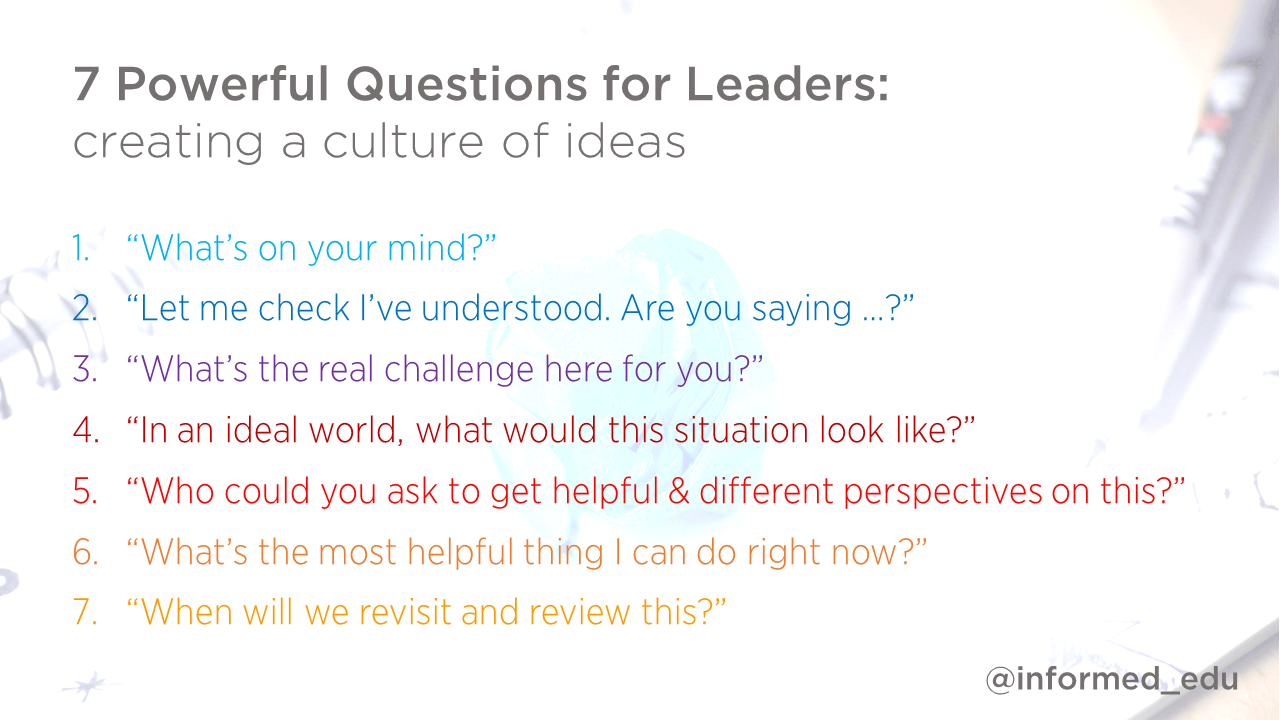When it comes to conversation, relationships matter. So how can you use conversation to make relationships better, improve trust and really get things done?

Clearly, a good relationship with others makes your life easier. But, as Kim Scott says in her excellent book, Radical Candor, it’s a two way street:
“there’s a chicken-and-egg interaction between your relationships and your responsibilities. You can’t fulfill your responsibilities without good relationships, but the way in which you fulfill your responsibilities is integral to those relationships. They’re built from the outside in and the inside out.”
Great communication both rests on good relationships and builds better relationships. By improving the way you have conversations then you create a virtuous circle for everyone around you.
Good conversations build rapport, but that doesn’t mean you must avoid saying anything challenging. Indeed, uncomfortable conversations can improve relationships, although I’ve previously written about eight ways that we desperately try to avoid them and cause more problems in the long-run.
There’s five simple ideas you can use within conversation to build rapport and get things done.
Just this week, I helped a colleague use these ideas to tackle a tricky issue with their CEO. Their verdict:
“Well that worked. […] I feel like Derren blummin Brown“
So here they are:
Pay attention to the whole conversation. Loads of articles tell you ‘don’t sit there thinking of what you’re going to say next, but listen to what they’re saying‘. This is decent advice but it’s not enough. Paying attention means not glancing at your phone, not looking over the person’s shoulder, not thinking about your next meeting and not formulating your next response. And yet, these are all absolutely necessary, but also deeply insufficient. If you’re only listening to the words being said, you’re only listening to a third of the conversation. People communicate in three ways in a conversation.
- Verbal: the words being said
- Paraverbal: the way the words are being spoken
- Nonverbal: the body language, movement, facial expression, gestures, blushing, sweating, gaze etc.
When you’re really paying attention, you’re taking careful note of all three, looking out for interesting choices of word or phrase, for pauses, fluidity and intonation as well as the physical clues of what the person feels about what they’re saying or hearing.
You can only build rapport when you are really paying attention. Rapport is built when the other person thinks they’re being listened to, being validated, trusted and made to feel safe. None of that is possible unless your attention is on your partner.
Radiate openness, warmth and engagement. Whether you’re actually speaking or not, you are broadcasting non-verbal signals at all times.
Match your signals to your partner’s mood as much as possible – a warm, relaxed face and body language with regular smiles and nods feels very encouraging. If the other person is expressing anxiety, pain or anger then a gently, warmly compassionate face – gently furrowed eyebrows, slightly tilted head – shows you care. Use neutral words and phrases such as “Mmm”, “I see”, “Ah right”, “Oh wow”, etc. to signal that you’re listening, though use them sparingly and don’t interrupt – silence and open body language and facial expression can be just as good.
Try and avoid crossed arms and do keep your body toward the other person – if you’re taking notes then try to avoid like your body and face’s main focus is the computer or paper – keep your eyes as much as possible on your partner.
Invite more detail. Questions and invitations can encourage your partner to reflect and add detail. “Could you tell me more about…” or “Wow, what’s the story there?” demonstrate interest. Open questions are really helpful – i.e. questions that encourage extended responses not one-word answers. How is always a particularly good way to start a question – ‘how did you come to that conclusion‘ can seem less judgemental than ‘why did you do that?’ Other good questions could include “How had you imagined it” or “How could we make this work?“
Avoid judgements wrapped in questions! ‘How did you think that was a good idea?‘ isn’t actually a question, it’s a slap-down wrapped around your opinion…
Demonstrate your listening and understanding. We connect better with people who seem like us, who really get us. There are several little tools here.
One is labelling where you name the emotion your partner is feeling. “It seems like you’re frustrated” or “that’s probably disappointing” or “it sounds like you are really excited” are good examples – they suggest an emotion which lets your partner accept, correct or reject it. Avoid adding in the personal pronoun – “I think you’re happy” makes it about you, not them. Avoid insisting on a label they might reject – “You’re clearly upset” suggests you know them better than they know themselves and is a risky tactic.
Two related tools are paraphrasing and summarising. Paraphrasing is repeating back an idea or phrase in different words – typically using a similar amount of words. Summarising takes a much longer chunk of what’s been said and distils it down to fewer words. It’s always better to offer your paraphrase or summary tentatively or leave room for them to correct you – you can learn a lot by offering your understanding and letting them add detail and correct things.
A final tool is mirroring. The simplest approach is listen to the last few words the person just said and use them in your question or summary. E.g. them: ‘… and after all of that I ended up feeling incredibly frustrated’, you: ‘it’s not surprising that you felt incredibly frustrated, in the circumstances’. It can feel a bit wierd at first but this simple tool works. Some people also suggest mirroring some of your partner’s nonverbal signals – if they smile, you smile, if they lean back in their chair, you do the same briefly after. However, use this sparingly as it can be odd.
Use silence. Susan Scott uses the lovely phrase “let silence do the heavy lifting” in her book Fierce Conversations. Chris Voss, in Never Split the Difference, suggests using silence as a powerful tool after every time you use open questions, mirroring and labelling, leaving the powerful tool to work its magic.
Silence helps the conversation slow down. A pause before you respond gives your partner more time to add more thought. It suggests that you’ve thought carefully about what they’ve said before speaking. You can fill a silence with a slow, relaxed exhale or with a “hmmm” and a nod.
Each time you’re silent, you’re signalling that you’ve chosen not to give your interpretation or opinion. Instead of jumping in, you’re giving thinking time. However, we can also get very uncomfortable with silence, and it makes your partner’s mind start racing to think “what else could or should I say here?” Do use this powerful tool, but do be aware of the impact it can have, especially if the other person is nervous of you and of what you’re really thinking.
All of these five approaches can ensure that each conversation builds more rapport. Not only will you get much more from each conversation as you’re noticing and reflecting on more that’s being said (and not said), but the other person will feel more listened to, more appreciated, more understood, even if the conversation eventually gets to a point of challenge or disagreement.
Of course, there are plenty of other ways to build rapport and trust outside of conversation: doing activities together, sharing personal stories or recounting stories of former experiences together and asking for help and guidance from each other. Trust and rapport are also built through competence, benevolence and integrity. I’ll return to some of these topics in a later blog.
For now, find times to work these ideas into your conversation. I’d recommend a couple of interesting books on the topic for further reading:
- Fierce Conversations, by Susan Scott
- Never Split the Difference, by Chris Voss
You might also be interested in some other blogs of mine on communication:
Necessary, tough conversations often fail. Here’s 8 reasons why.
7 powerful questions for leaders: creating a culture of ideas
The disagreement dissolver: a check-list for stamping out misunderstanding at work
The art of being level-headed, not emotionally blinded
9 ways for leaders to be better at communication




















































